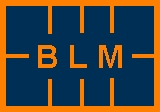Pulse oximetry: Research and Development
Pulse oximetry is an extremely successful method for monitoring the oxygen supply, in particular the respiratory function of a person. This success means that pulse oximetry is finding increasing application in a range of different areas, in particular in the monitoring of the unborn child and the monitoring of mobile patients. This latter group includes online monitoring of people with high risk of respiratory disorders who nevertheless want to remain active in sport.
A necessary corollary of this is that pulse oximetry must become more robust to movement and movement artefacts. It is preceisely in this area that BLM has concentrated its energies.
Research in the area of Pulse oximetry is concerned with the development of special sensors for a wide variety of applications: from active, mobile people to professionals who require pulse oximetry for safety in carrying out their jobs, e.g. firefighters, pilots, extreme sportspeople, mountain climbers. Pulse oximetry is naturally also important for patients in rehabilitation. A traditional finger or earlobe sensor is not suitable in these areas, thus an entirely new sensor concept needs to be developed. It is precisely this which BLM excels at doing. We have intensively focused upon the areas of wave length optimalization, maximization of modulations depth for the extraction of signals even in low perfusion areas and areas of very low saturation. Our development of foetal pulse oximetry exemplifies this. BLM’s experties in these areas is the result of many years of intensive basic research in the areas of tissue optics and pulse oximetry sensors.
|
|
BLM is continually optimizing the sensor concept in the laboratory and the clinic, to maximize accuracy of transmission- pulse oximetry in the delivery room. The results of these efforts are also transferable to pulse oximetry in babies, small children and adults, not to mention ‘safety monitoring’ of active patients.
|





